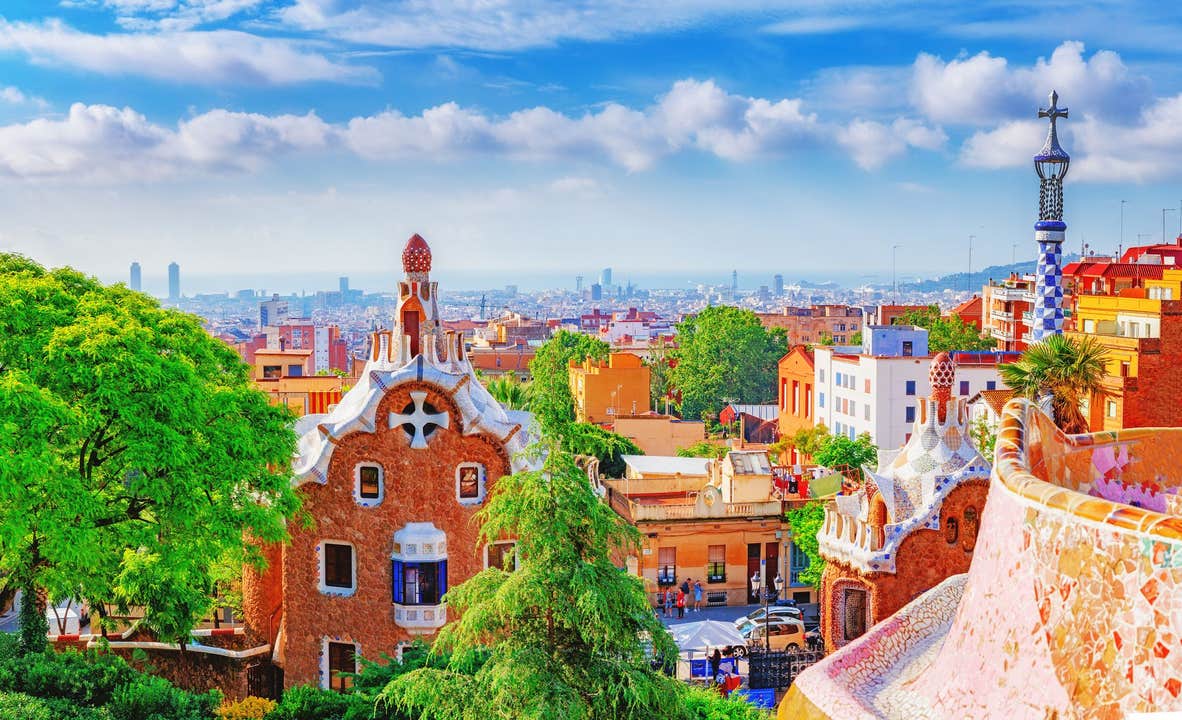
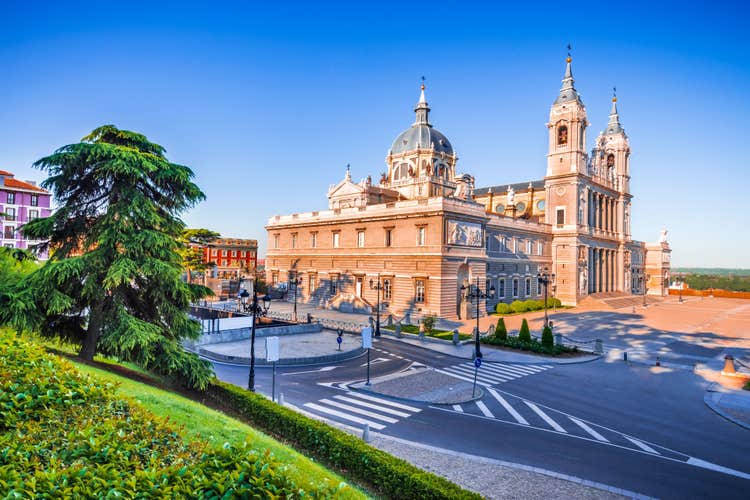
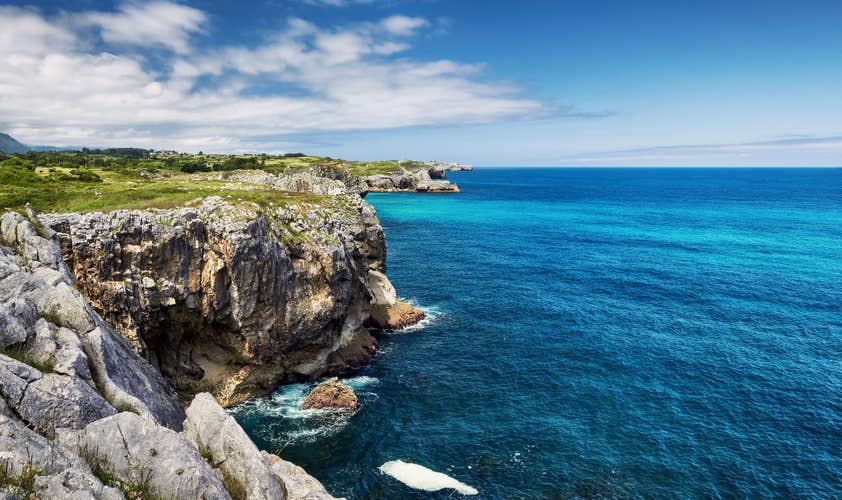


Learn about the best time to visit Spain. Know when to go for the best weather and fewest crowds. Find the cheapest time to travel and discover what to do year-round. Whether sipping sangria by the beach, exploring historic cities, or hitting the slopes in the Sierra Nevada—each season brings something special.
Each region in Spain offers different weather, from the sunny beaches in the south to the misty, green landscapes in the north. Understanding the weather is important to fully enjoy Spain's lively culture and stunning natural beauty.
Explore how to align your travel dates with the most exciting tours and activities in Spain. Selecting the right time of year can greatly enhance your trip, whether you’re planning for city breaks in Madrid, beach vacations in Ibiza, or weekend getaways in Seville.
Read on and tailor your adventure for an unforgettable experience!
When is The Best Time To Visit Spain?

The best time to visit Spain for comfortable weather, fewer crowds, and cultural events is in spring (March to May) or fall (September to November). These months are ideal for exploring cities, hiking scenic trails, and enjoying famous festivals like Feria de Abril in Seville.
For beach trips, summer offers warm waters and lively coastlines, while winter is perfect for skiing in the Sierra Nevada or experiencing Christmas markets in cities like Madrid and Barcelona. No matter when you go, Spain has something special to offer.
Climate in Spain
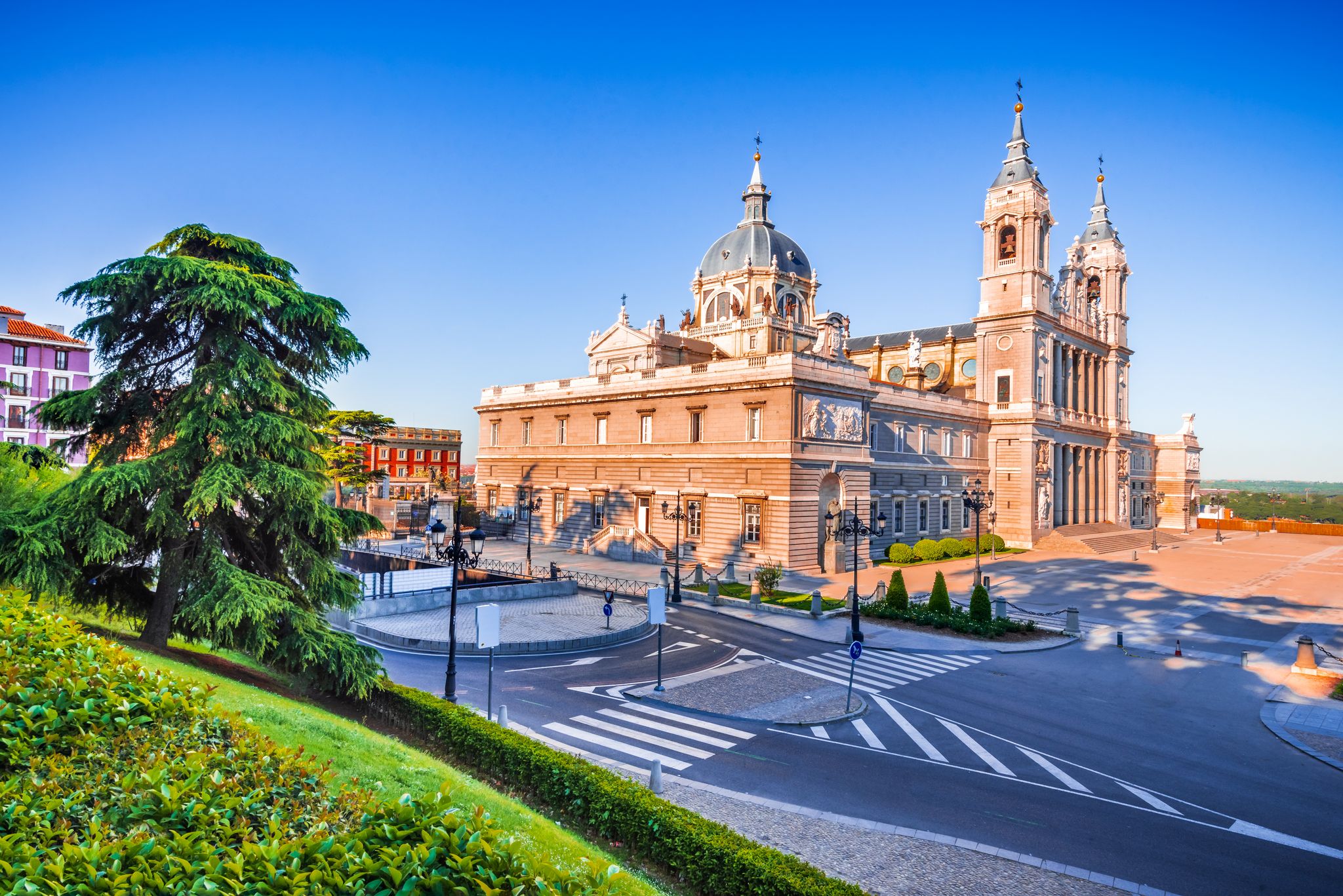
If you're thinking about visiting Spain, it's wise to get to know the different weather patterns across its regions. Let’s take a closer look at what weather to expect in Spain’s northern, southern, coastal, and central regions, ensuring you experience the best weather for Spain during your travels.
Climate in Northern Spain
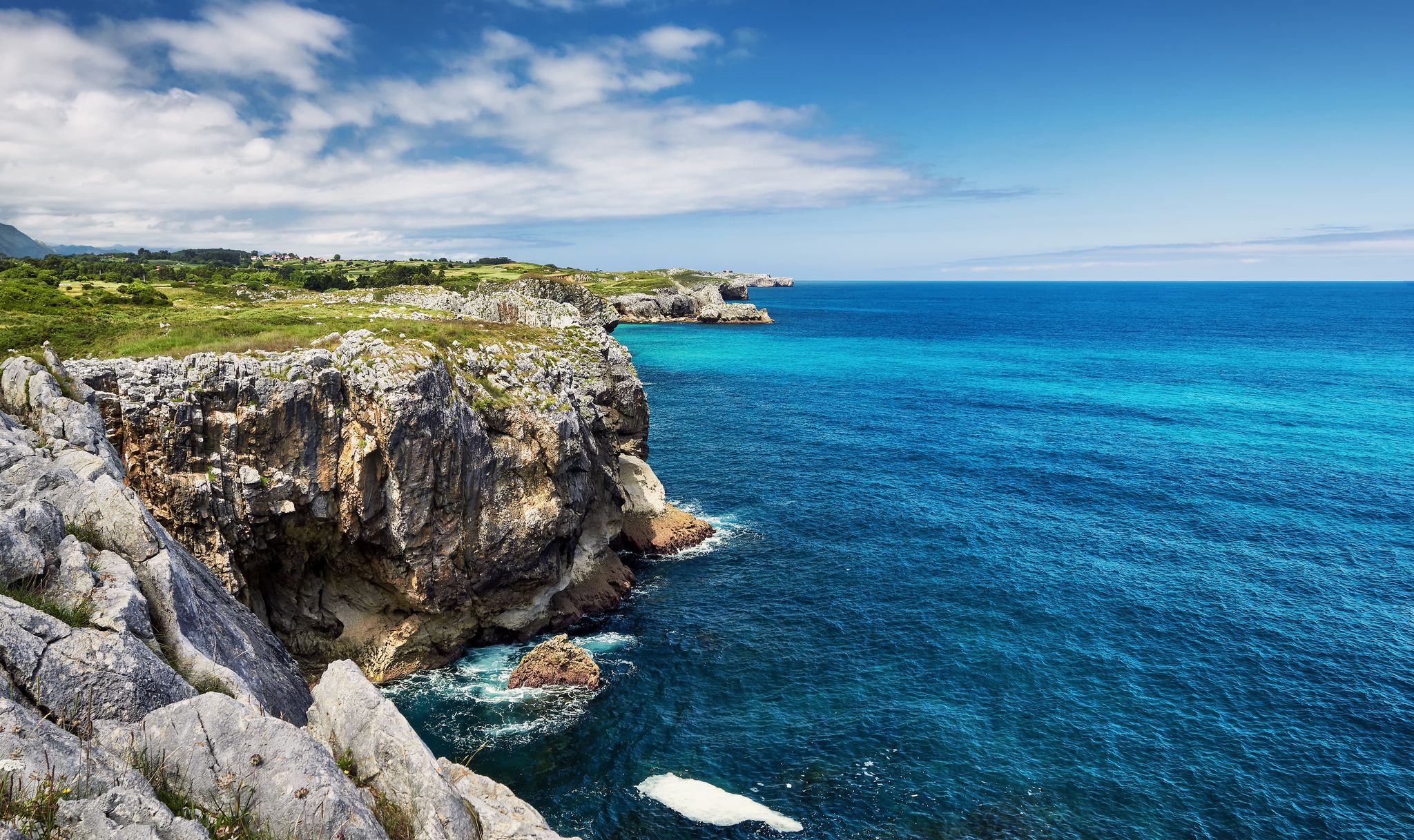
Northern Spain, consisting of regions like Galicia, the Basque Country, Asturias, and Cantabria, is known for its cooler temperatures and lush, green landscapes. It’s a great spot if you enjoy cooler weather, outdoor activities, and visiting historic towns.
The best time to visit Northern Spain, based on the weather, is during summer, spring, and fall if you prefer slightly milder temperatures.
Average Temperatures in Northern Spain
- Spring (March to May) Average High: 59 F to 64 F (15 C to 18 C) Average Low: 43 F to 50 F (6 C to 10 C)
- Summer (June to August) Average High: 68 F to 77 F (20 C to 25 C) Average Low: 57 F to 64 F (14 C to 18 C)
- Autumn (September to November) Average High: 61 F to 68 F (16 C to 20 C) Average Low: 48 F to 55 F (9 C to 13 C)
- Winter (December to February) Average High: 50 F to 55 F (10 C to 13 C) Average Low: 37 F to 43 F (3 C to 6 C)
Precipitation in Northern Spain
Northern Spain is known for its frequent rainfall, especially in the autumn and winter months. Snowfall is common in the higher elevations during winter.
- Spring: Moderate rainfall
- Summer: Relatively dry with occasional showers
- Autumn: Heavy rainfall
- Winter: Frequent rain and snowfall in higher areas
Be prepared for varying weather conditions in the north of Spain, especially if traveling during the wetter seasons.
Climate in Southern Spain

Heading down to the south, especially in Andalusia, things heat up with warm summers and mild winters. It’s perfect for checking out historic castles, soaking up the sun on beautiful beaches, and attending lively local festivals. Cities like Seville and Granada are full of captivating spots to discover under a bright, sunny sky.
The best times to visit Southern Spain are during spring and fall when the temperatures are most comfortable. However, summer brings vibrant festival seasons that are also attractive despite the higher temperatures.
Average Temperatures in Southern Spain
- Spring (March to May) Average High: 70 F to 80 F (21 C to 27 C) Average Low: 50 F to 60 F (10 C to 16 C)
- Summer (June to August) Average High: 85 F to 95 F (29 C to 35 C) Average Low: 65 F to 75 F (18 C to 24 C)
- Autumn (September to November) Average High: 75 F to 85 F (24 C to 29 C) Average Low: 55 F to 65 F (13 C to 18 C)
- Winter (December to February) Average High: 60 F to 70 F (16 C to 21 C) Average Low: 45 F to 55 F (7 C to 13 C)
Precipitation in Southern Spain
Southern Spain is particularly drier compared to the north. It experiences minimal rainfall throughout the year. Summer months are especially dry, while winter can bring occasional showers.
- Spring: Light rainfall
- Summer: Very dry
- Autumn: Sparse rainfall
- Winter: Occasional showers
Climate in the Eastern Coastal Region

The eastern coast, where Barcelona and Valencia are, offers mild winters and warm, humid summers. These conditions create the best time to visit Spain, especially for beach enthusiasts or those keen to delve into the rich culture and vibrant nightlife.
The best time to visit the Eastern coast of Spain is during summer for those who enjoy warm weather and bustling city life. However, the mild spring and autumn conditions also provide pleasant times for exploring the region's beaches and cultural offerings.
Average Temperatures in the Eastern Coastal Region
Spring (March to May) Average High: 63 F to 73 F (17 C to 23 C) Average Low: 47 F to 57 F (8 C to 14 C)
Summer (June to August) Average High: 75 F to 85 F (24 C to 29 C) Average Low: 60 F to 70 F (16 C to 21 C)
Autumn (September to November) Average High: 68 F to 78 F (20 C to 26 C) Average Low: 53 F to 63 F (12 C to 17 C)
Winter (December to February) Average High: 55 F to 65 F (13 C to 18 C) Average Low: 40 F to 50 F (4 C to 10 C)
Precipitation in the Eastern Coastal Region
The Eastern coast generally experiences moderate rainfall, with winter and autumn seeing the most precipitation. Summers are comparatively drier, making it a great time for beach activities.
- Spring: Moderate rainfall
- Summer: Low rainfall
- Autumn: Moderate to high rainfall
- Winter: High rainfall
Climate in Central Spain

Central Spain, which includes the capital city of Madrid, is known for its hot summers and cold winters. The region offers abundant sunshine throughout the year, making it ideal for exploring museums, parks, and the energy of city life. The cooler nights are perfect for Madrid nightlife tours and exciting experiences to end the day.
The best times to visit Central Spain are spring and autumn. During these seasons, the temperatures are mild and pleasant for sightseeing and outdoor activities. However, the sunny days of summer also attract visitors who enjoy vibrant city life and cooler evenings.
Average Temperatures in Central Spain
Spring (March to May) Average High: 60 F to 75 F (16 C to 24 C) Average Low: 40 F to 50 F (4 C to 10 C)
Summer (June to August) Average High: 85 F to 95 F (29 C to 35 C) Average Low: 60 F to 70 F (16 C to 21 C)
Autumn (September to November) Average High: 65 F to 75 F (18 C to 24 C) Average Low: 45 F to 55 F (7 C to 13 C)
Winter (December to February) Average High: 50 F to 60 F (10 C to 16 C) Average Low: 30 F to 40 F (−1 C to 4 C)
Precipitation in Central Spain
Central Spain experiences relatively low precipitation throughout the year. Occasional rainfall increases slightly during spring and autumn.
- Spring: Moderate rainfall
- Summer: Low rainfall
- Autumn: Moderate rainfall
- Winter: Low rainfall
Travel Seasons in Spain

Spain's diverse climate means every season brings a unique twist to your trip. Each comes with its pros and cons, including varying crowd levels, prices, and travel-friendly weather. Choosing the right season can make all the difference in your travel experience. By following a few tips, each season can offer great experiences.
Tips for Visiting Spain During Peak Seasons

During summer, Spain is bustling with activity. To avoid inflated prices and sold-out options, book flights and accommodations early. Try to start sightseeing early in the day, too, to beat large tour groups. Exploring lesser-known destinations like Zaragoza and Almeria can enhance your trip with beauty and fewer crowds.
Don't forget to stay hydrated, as the Spanish summer heat can be intense. Locals take a break during the hottest part of the day, so why not do the same? When the temperature cools down, you can join the evening buzz. This is when towns and cities come alive, with locals heading out for dinner and drinks.
Tips for Visiting Spain During Shoulder Seasons

Spring and fall offer stable weather with warm days and cool nights, so it’s wise to pack layers. These seasons bring local festivals like Feria de Abril in Seville and La Merce in Barcelona. They provide a chance to experience cultural traditions and enjoy unique events not available at other times.
The moderate weather of spring and fall is ideal for hiking, biking, or simply wandering through Spain's historic cities without the intense heat or crowds of the peak season. Plus, you can often find better deals on where you're staying as prices drop outside the busy summer months.
Tips for Visiting Spain During Off-Peak Seasons
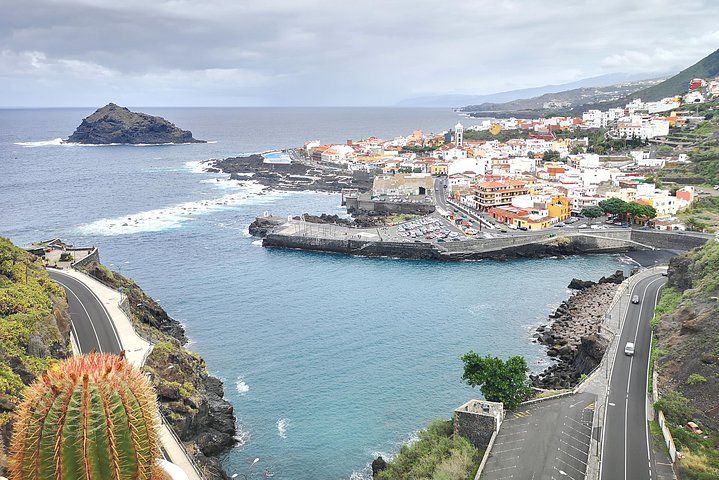
The off-peak season is like a hidden gem. Places like the Canary Islands and southern Spain still have lovely weather but with far fewer people around. It's also a special time to enjoy Spanish traditions, like the magical Christmas markets during winter, which offer unique gifts and tasty treats.
Take advantage of Spain's attractions during the off-peak season without the crowds. Visiting famous spots is also a breeze now. With shorter lines and less crowded views, you can take in the sights at your own pace.
Remember to pack warm, though, especially if you're heading to the north or central parts of Spain, where it can get chilly. Just bundle up, and you'll be ready to enjoy Spain's cooler side, from snowy landscapes to cozy, vibrant city scenes.
Seasonal Guide: Spring, Summer, Autumn, and Winter in Spain

Spain experiences four distinct seasons each year. Choosing the right one for your visit can greatly enhance your travel experience. The best time to travel to Spain depends on what you’re looking for, as every offers its own unique charm.
Each time of year offers something special, from lively festivals and beachside relaxation in the summer to serene landscapes and cultural events in the cooler months. Understanding what each season has to offer will help you plan a trip that aligns with your interests and preferences.
Spring in Spain (March to May)

Spring in Spain brings mild temperatures, ranging from 48 F (9 C) to 75 F (24 C), and blooming landscapes. The country blossoms with colors, making it perfect for city sightseeing tours in Spain. Spring is the best time to visit Barcelona, a perfect season to explore lively streets and landmarks like the Sagrada Familia.
The Canary Islands stand out with their warm and floral spring, which adds to the country's seasonal charm. Despite sunny March beaches, the sea remains too cool for swimming. Here are the events that you can expect in spring:
Semana Santa (Holy Week)
During Holy Week, Seville and Malaga come alive with Semana Santa processions and floats. The scent of incense and holy music fills the air, creating a welcoming atmosphere.
Feria de Abril (Late April to Early May)
From late April to early May, Seville's Feria de Abril celebrates Andalusian culture with flamenco dancing and vibrant "trajes de flamenca" dresses. Music, clapping, and savory scents from "caseta" tents are characteristic of these festivities.
Summer in Spain (June to August)
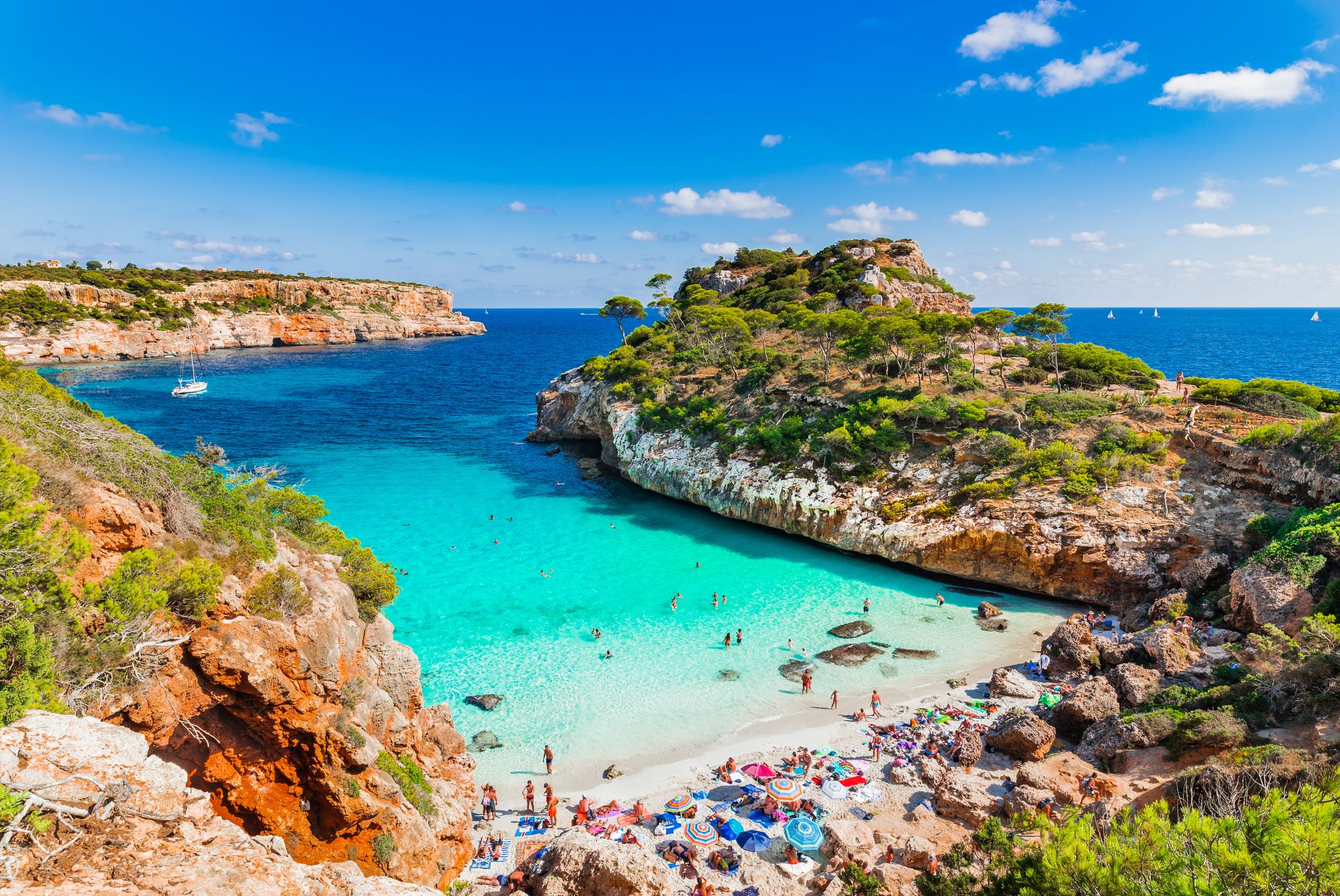
During summer, Spain bathes in warm sunshine, typically between 64 F (18 C) and 86 F (30 C), particularly along the coast and in southern areas. The nights are also warm, often above 68 F (20 C), perfect for enjoying the summer evenings.
This season is the ideal time to get beach vacation packages in Majorca. It's also a period rich with vibrant festivals that fill the streets with color and energy, reflecting the country's lively spirit. Here are some of the events that you can look forward to in the summer:
Festival of San Fermin (July)
From July 6th to 14th, experience Pamplona's San Fermin Festival, famous for the adrenaline-pumping running of the bulls. Celebrate Spanish culture with lively music, traditional dances, and local cuisine, all in honor of Saint Fermin.
La Tomatina (August)
At La Tomatina in Buñol on the last Wednesday of August, you'll join a massive tomato-throwing fight, turning streets into red rivers. This fun, unique event attracts people worldwide and blends tradition with a sense of unity.
Autumn in Spain (September to November)

In autumn, Spain offers fewer crowds and cooler temperatures, usually between 63 F (17 C) and 75 F (24 C), creating an ideal time to visit. The country transforms with subtle autumn hues, adding to the landscape's beauty. This season also allows you to comfortably join cultural tours in Spain to explore its rich heritage.
While temperatures slowly drop, beaches remain open until November. In Central Spain, rain chances rise, so it is a great time to visit museums and enjoy indoor activities. Here are the events that you can expect during autumn:
La Merce (September)
At La Merce, Barcelona comes alive with traditional parades, human towers, and fiery "correfocs" fireworks run. Music and art installations merge with the city's history, showcasing Barcelona's rich culture.
Fiesta de la Vendimia (September)
At the Fiesta de la Vendimia in La Rioja, experience winemaking with activities like grape stomping and savor freshly pressed wines. The lively event features parades, performances, and a fireworks display.
Winter in Spain (December to February)
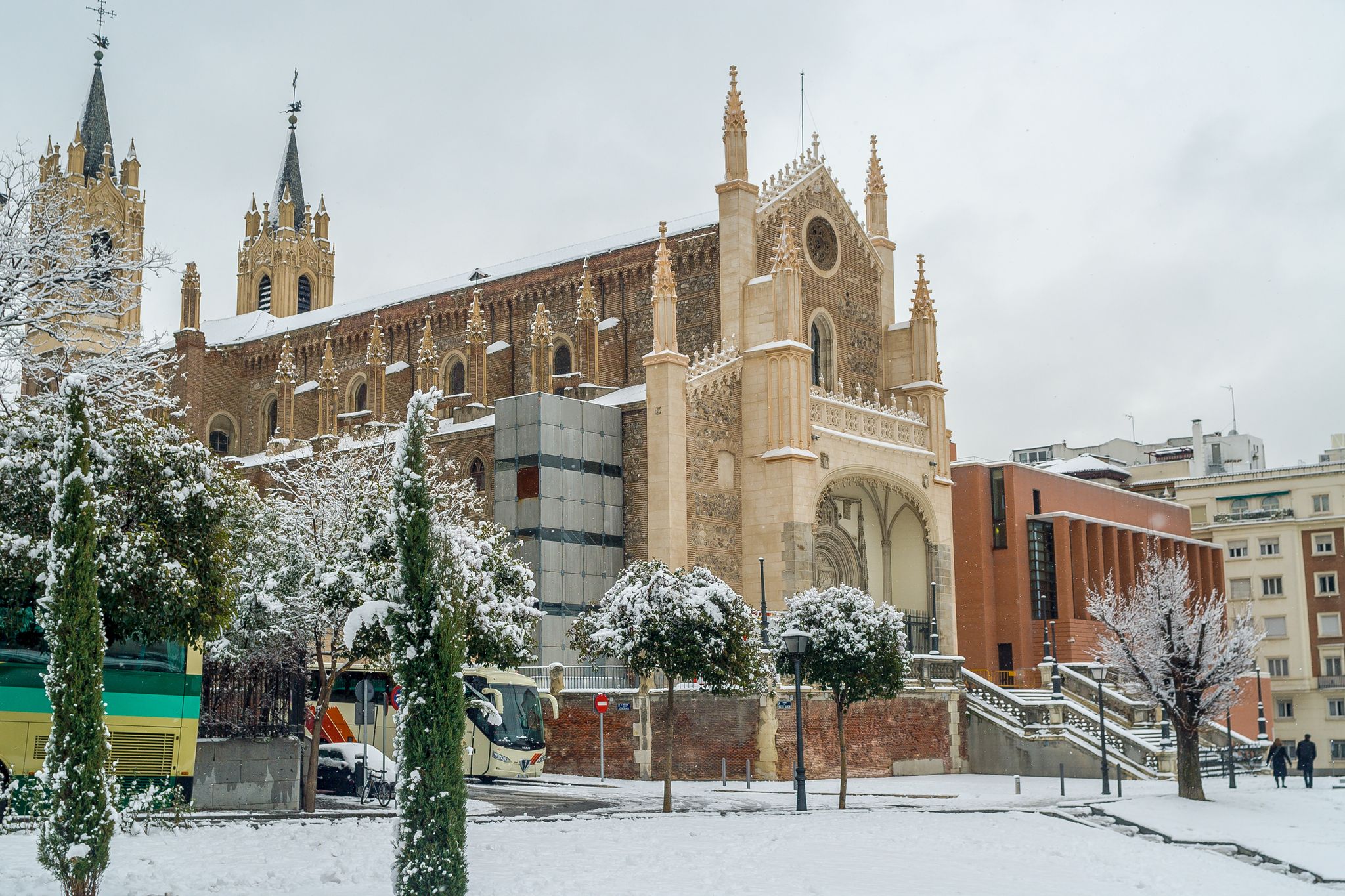
Winter in Spain brings comfortable temperatures ranging from 43 F (6 C) to 61 F (16 C), marking the low season. However, the regions of Cantabria and Asturias face frequent snowfalls and rainfalls. Coastal regions also undergo a rainy season, offsetting the dry summers.
Despite this, the season invites you to experience Spain’s festive lights and bustling Christmas markets. Here are the events that you can expect in winter:
Three Kings Day (January)
In January, Three Kings Day fills cities like Barcelona and Madrid with parades celebrating the Magi's visit to the baby Jesus. Enjoy the "Roscon de Reyes," a traditional cake with a hidden figurine or bean, bringing good luck if you find the figurine.
Carnival (February or March)
During Carnival in Tenerife, enjoy stunning costumes and grand parades reminiscent of Rio's Carnival. The highlight is the selection of the Carnival Queen, with streets alive with music, dancing, and festive spirit.
Best Month To Visit Spain

Spain offers a diverse range of experiences year-round, showcasing its unique charm with each passing month. Discover the best time to visit Spain by exploring lively festivals or tranquil natural landscapes, and find the ideal month to enjoy its highlights.
Spain in January
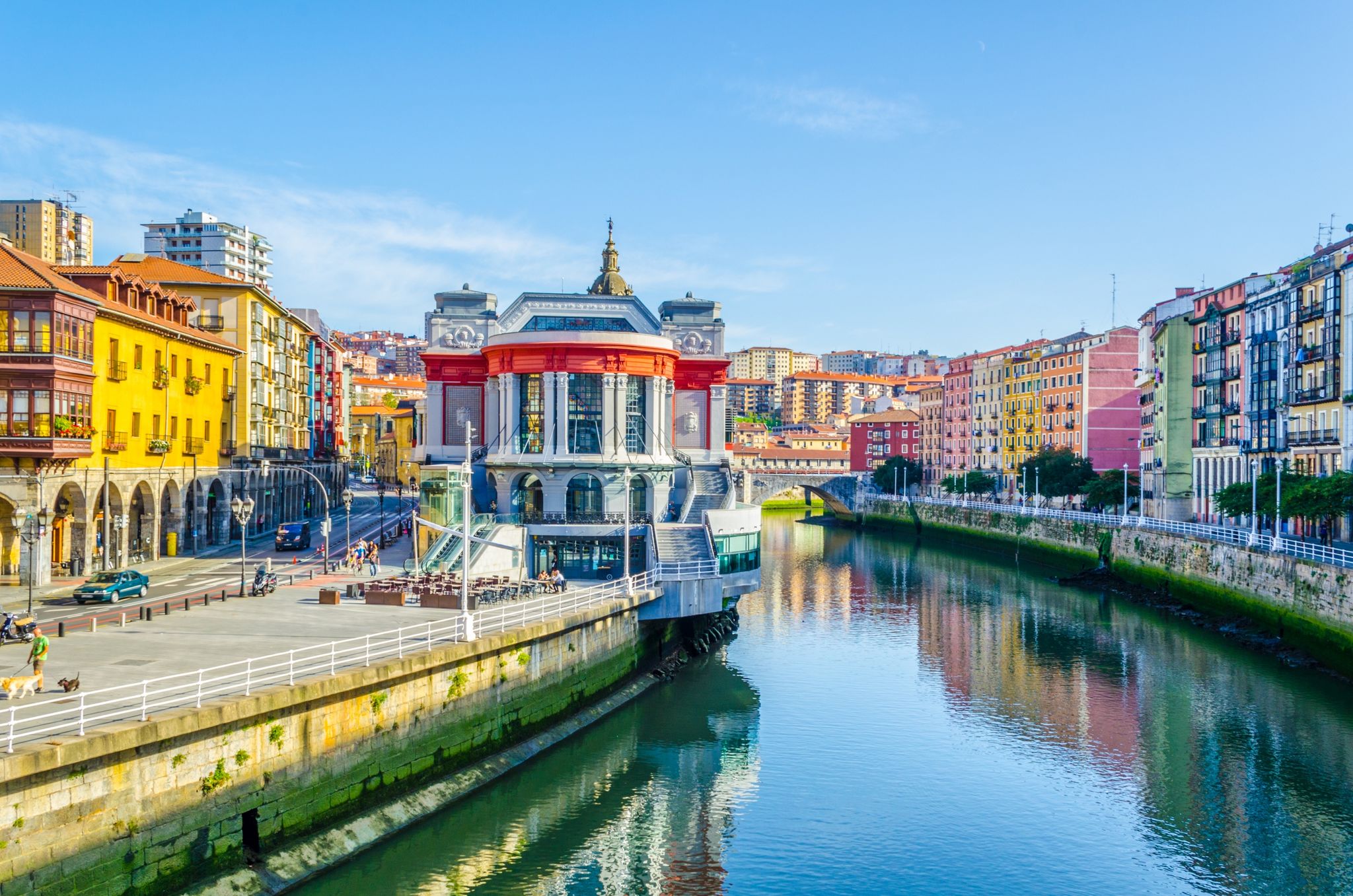
In January, Spain is quieter, allowing for a leisurely exploration of its cities without the usual crowds. The snow-covered mountains are ideal for skiing, offering thrills and stunning views of the Pyrenees and Sierra Nevada. Cities like Madrid and Bilbao have shorter lines at famous museums.
Securing a table at popular Spanish eateries is easy, providing a convenient and authentic culinary experience. Relish tapas on Spain’s culinary tours, savoring diverse, flavor-packed small plates.
The pleasant climate, particularly in the Canary Islands, is perfect for nature enthusiasts to enjoy hiking and bird-watching. The overall pace of life slows down, allowing you to experience the local culture and a more relaxed lifestyle.
Spain in February
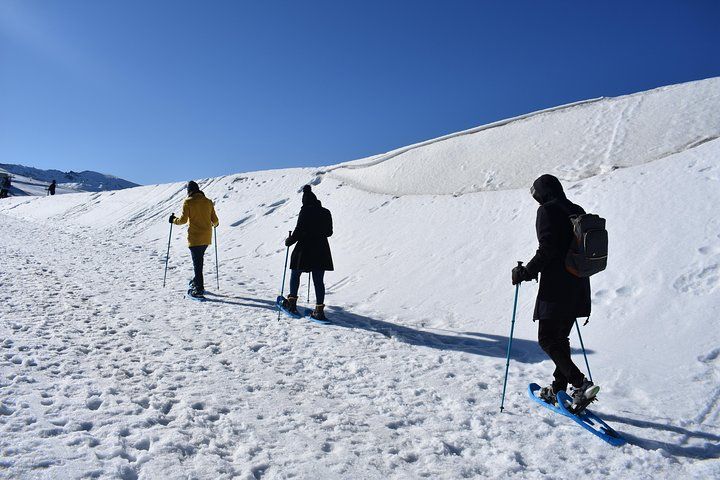
February presents a quieter yet equally rewarding experience. Almond trees bloom, especially in Mallorca, adding subtle colors to the landscape. The Sierra Nevada and Pyrenees mountains offer excellent skiing conditions for those interested in snow sports. The cooler weather is also conducive to other outdoor activities in Spain.
City breaks in Barcelona, Madrid, and Granada are more relaxed with fewer tourists. Cultural experiences like watching flamenco shows or sampling Spanish cuisine become more intimate with fewer crowds. For a more lively experience, the Carnaval de Sitges brightens the town of Sitges with vibrant parades and a friendly LGBTQ+ atmosphere.
Spain in March
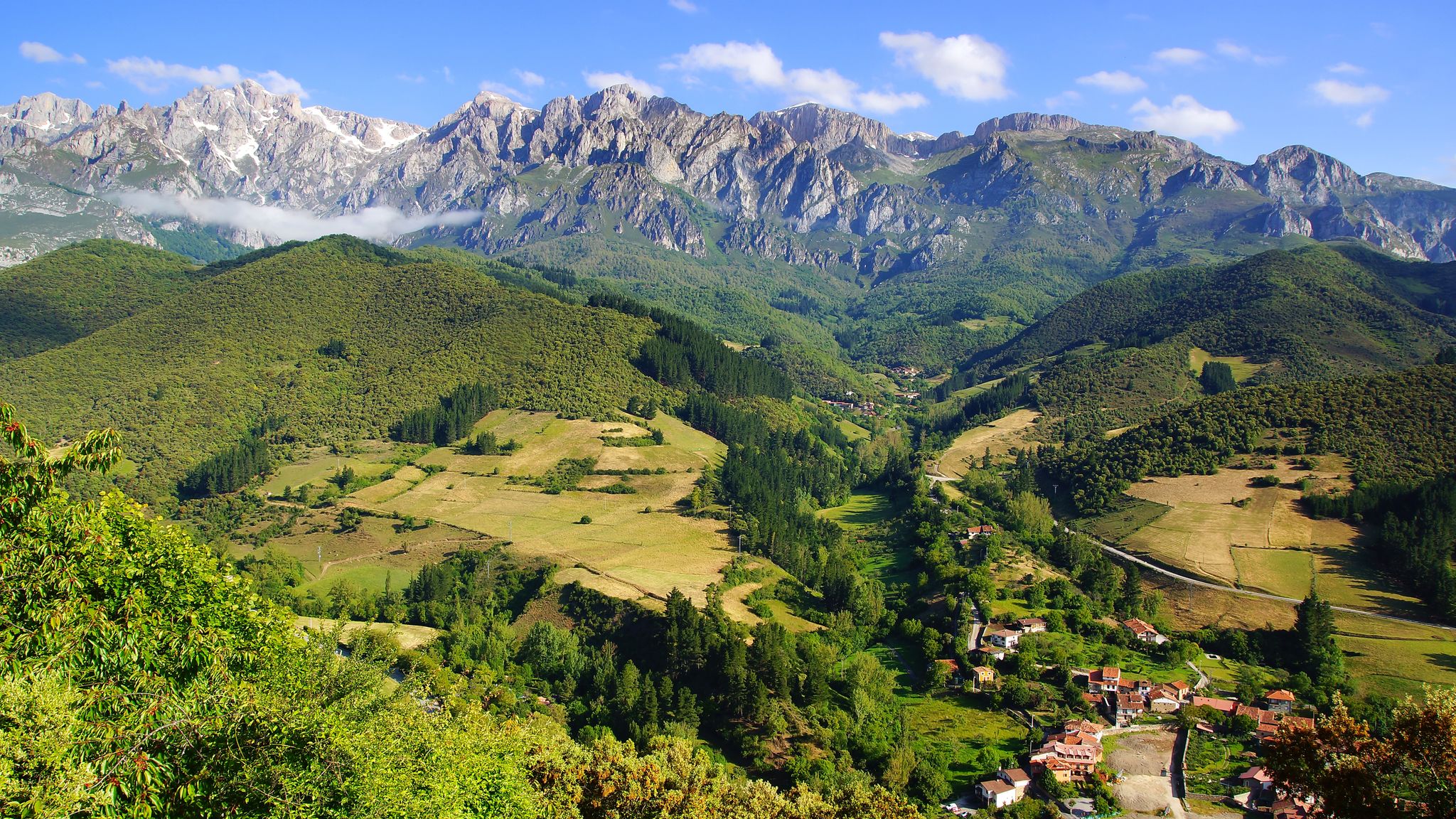
Spain's mild weather in March is perfect for outdoor activities. Explore the stunning Picos de Europa National Park in a day for hiking and spring landscapes. Comfortable city tours in Barcelona and historical tours in Seville let you discover landmarks and attractions without the summer heat and crowds.
The coast offers fresh, seasonal seafood like Cantabrian anchovies. These anchovies, paired ideally with a robust red wine from Rioja, embody the rich culinary heritage of Northern Spain. Additionally, the countryside blooms with fresh foliage, providing picturesque settings for leisurely drives or bike tours in Spain.
Spain in April

In April, you can bike through Spain's calm countryside and charming old towns. You can also go on a scenic electric tuktuk ride in Madrid to discover the highlights of the area. For a fun change of pace, you can try jet skiing along the sparkling Marbella coast, where the views are as thrilling as the ride.
If you like heights and stunning sights, hike the Caminito del Rey and walk along pathways high above a deep gorge. Alternatively, you can walk the Camino de Santiago trail, which takes you through peaceful fields and welcoming small towns.
Spain in May

Spain offers excellent outdoor activities in May with great weather. Hike the majestic Pyrenees or relax along the sunny Costa del Sol. City tours in cultural hubs like Madrid and Barcelona are less crowded for a more relaxed experience. Don't miss major art museums like the Museo Nacional del Prado in Madrid to see world-renowned artworks.
For culinary enthusiasts, engage in Spanish food and drink experiences in regions famed for their produce, like La Rioja for wine and Andalusia for olive oil. Home cooks can also attend cooking classes to learn how to prepare traditional Spanish dishes.
Spain in June
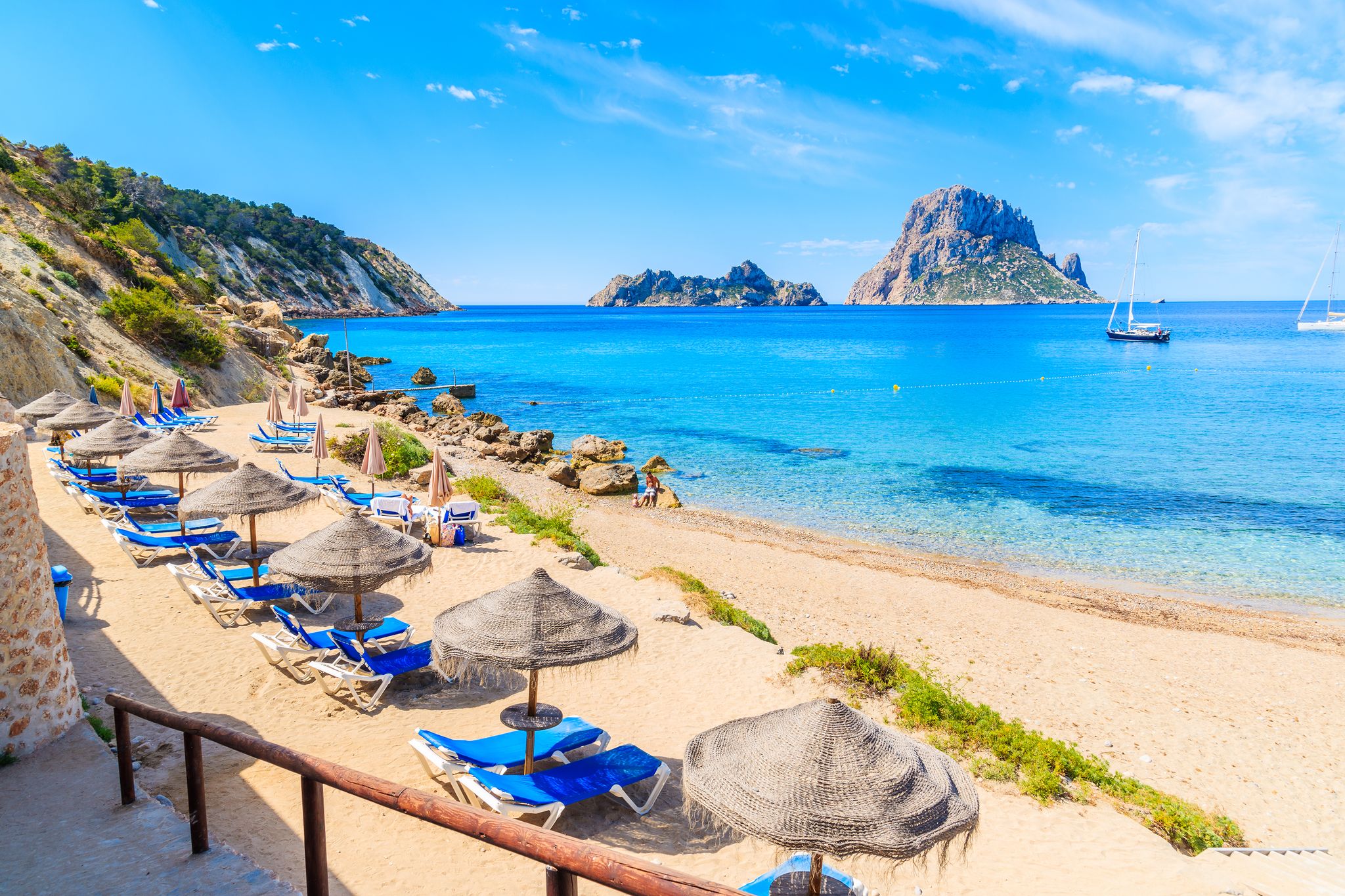
In June, Spain becomes a top choice for beach lovers and water sports enthusiasts. You can soak up the sun on the famous beaches of Costa Brava or dive into water adventures like snorkeling in the Balearic Islands. The warm weather also offers perfect conditions for walking tours in Spain through picturesque landscapes and historic cities.
Natural parks and rural areas provide a peaceful retreat into nature. Hiking through the diverse terrains, you can explore the country's unique flora and fauna. For relaxation, choose a wellness retreat in a peaceful countryside or coastal location, where you can enjoy rejuvenating spa treatments and calming activities.
Spain in July
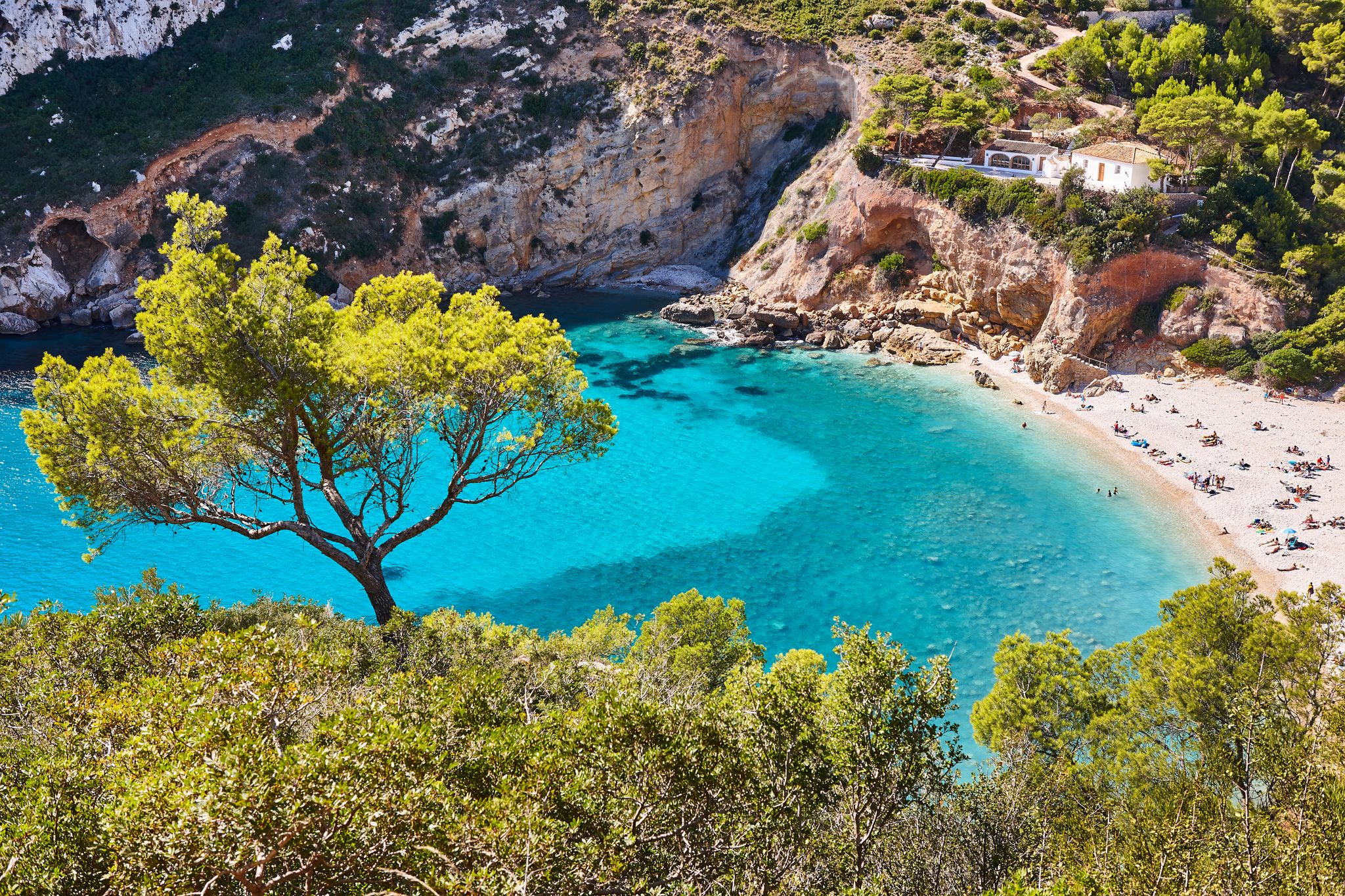
Spain heats up in July, making it a prime time for beach and water sports. The Mediterranean and Atlantic coasts are perfect spots for soaking up the sun. However, the beaches get busy as tourists and locals seek refreshment by the sea, enjoying the cooler evenings and the nightlife.
If you're looking for somewhere less hot, the mountains, like the Pyrenees and Sierra Nevada, offer hiking opportunities with more pleasant temperatures. Planning indoor activities or taking a siesta can also be a wise choice to avoid the peak heat.
Spain in August

In August, Spain offers a lively selection of outdoor activities. You can explore the coastline on a jet ski to discover secluded beaches or enjoy the cool, green landscapes of the north on serene hikes. Theme parks like PortAventura in Costa Daurada bring excitement with their thrilling rides and festive atmosphere.
Warm summer weather is perfect for water sports like snorkeling tours in Ibiza, paddle boarding activities in Barcelona, and kayaking adventures in Malaga. For a more relaxed experience, try horseback riding tours through the Spanish countryside.
Spain in September
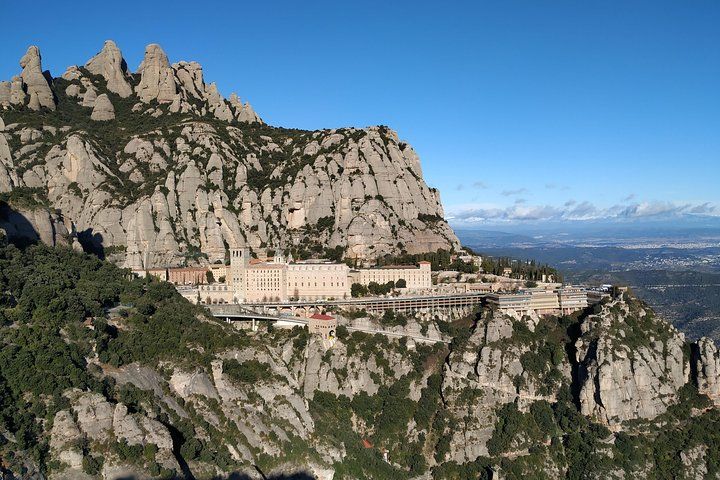
September is an ideal time to visit Spain, with favorable conditions that are perfect for exploring cities and enjoying outdoor adventures. You'll find temperatures comfortable for hiking in the north. You can also enjoy water activities like kayaking and snorkeling in Almeria, where you can explore Spain’s crystal-clear waters.
This month has fewer tourists and often lower accommodation rates. During this time, you can comfortably undertake walking tours through the winding streets of historic cities like Seville, Granada, or Toledo.
Spain in October

October in Spain brings pleasant weather, perfect for exploring dynamic cities and peaceful countryside. Cooler temperatures make it ideal to explore Sagrada Familia, Park Guell, and Old Town in Barcelona. Plus, traveling during this off-peak season often offers lower prices on accommodations and activities.
October is also a great time to experience Spain's natural beauty. You can enjoy outdoor adventures like hiking through Los Cahorros de Monachil in Granada without the summer heat. This season has a calm and inviting atmosphere, perfect for discovering quaint villages and hiking trails.
Spain in November

In November, Spain becomes quieter and offers a relaxed backdrop for visiting historic sites and museums. Consider visiting the Dali Theatre-Museum in Figueres for an immersion in Salvador Dali's surrealist world, making the experience even more enjoyable without summer crowds.
During this period, the All Saints' Day Fair in Cocentaina is remarkable, showcasing one of the oldest and grandest fairs. Touring vineyards or driving through the countryside will also give you a more intimate glimpse into Spain's varied scenery.
Spain in December

In December, Spain offers a variety of experiences. If you're interested in cultural activities, you can leisurely explore museums and historical sites without the usual crowds. Cities host vibrant Christmas markets filled with local crafts and foods. New Year's Eve is celebrated enthusiastically, especially in Madrid's Puerta del Sol.
Temperatures are comfortable, especially in southern Spain, perfect for hiking in national parks or exploring coastal towns. For winter sports enthusiasts, the Pyrenees mountains are a great destination for skiing. Our detailed guide will help you discover why December is a great month to experience Spain.
Best Time To Visit Spain for Different Vacations
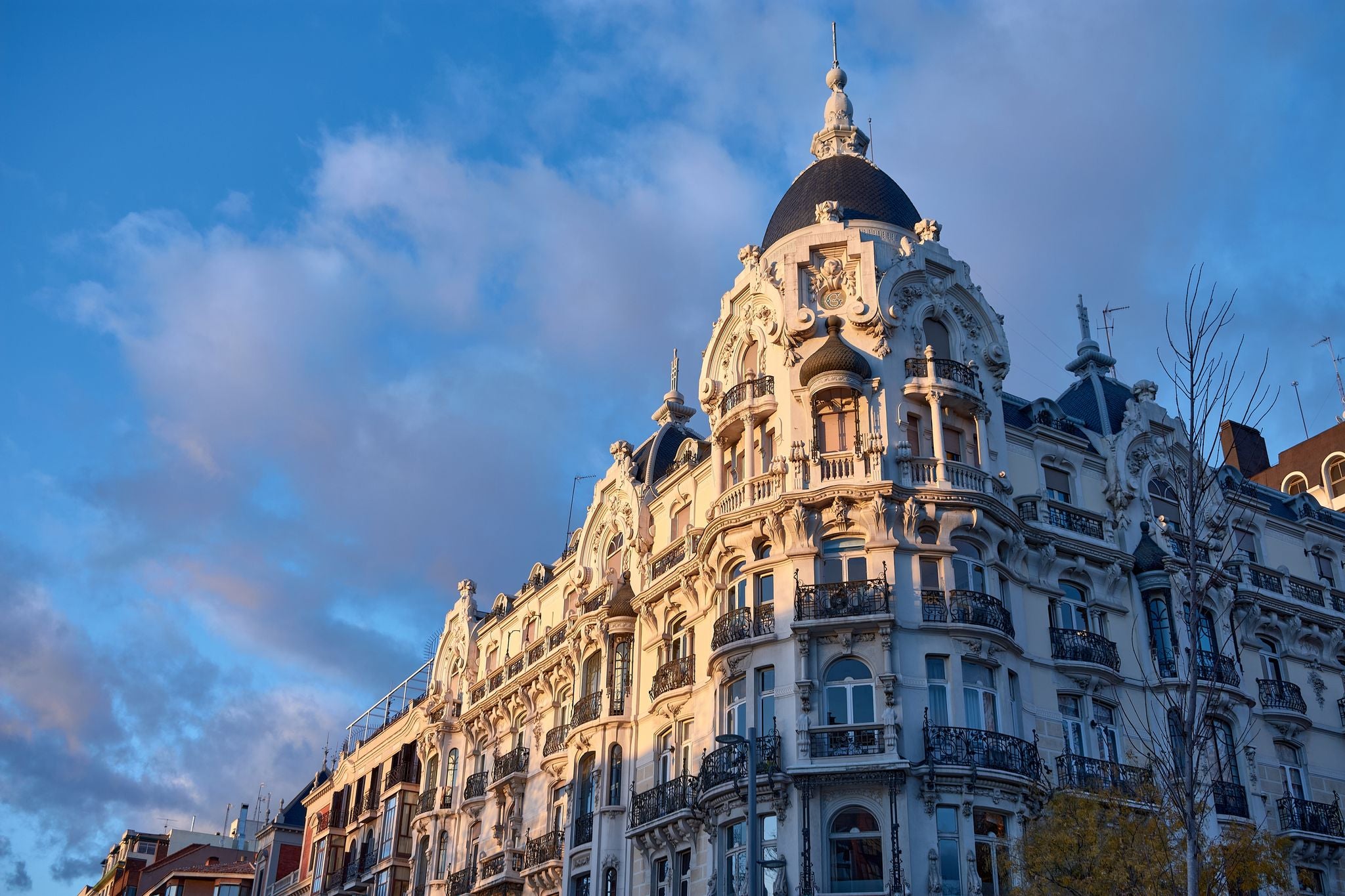
Planning your trip to Spain around specific interests ensures a memorable experience. Choosing the right time is crucial if you crave peaceful beach days, vibrant city explorations, scenic road trips, or exhilarating ski adventures. Discover when to visit Spain to experience the kind of holiday that you desire.
Best Time for Beach Holidays in Spain
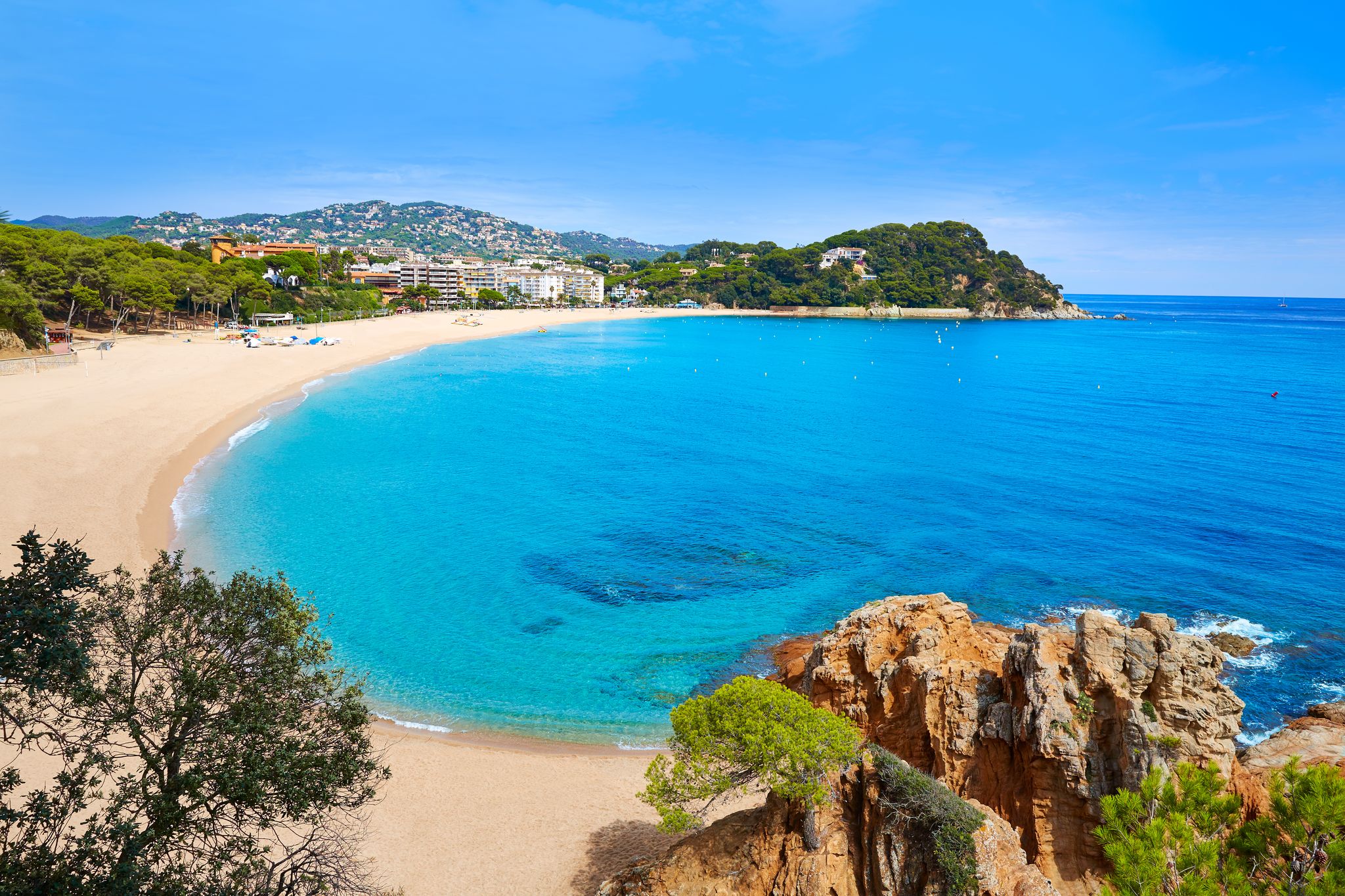
To make the most of the best beach vacation packages in Spain, visit in early June or the last two weeks of September. The Mediterranean waters are comfortably warm for swimming, and beaches on the Costa del Sol, Costa Brava, and the Balearic Islands are less crowded. This is perfect for enjoying sunrise swims and peaceful sunset walks.
Best Time for City Breaks
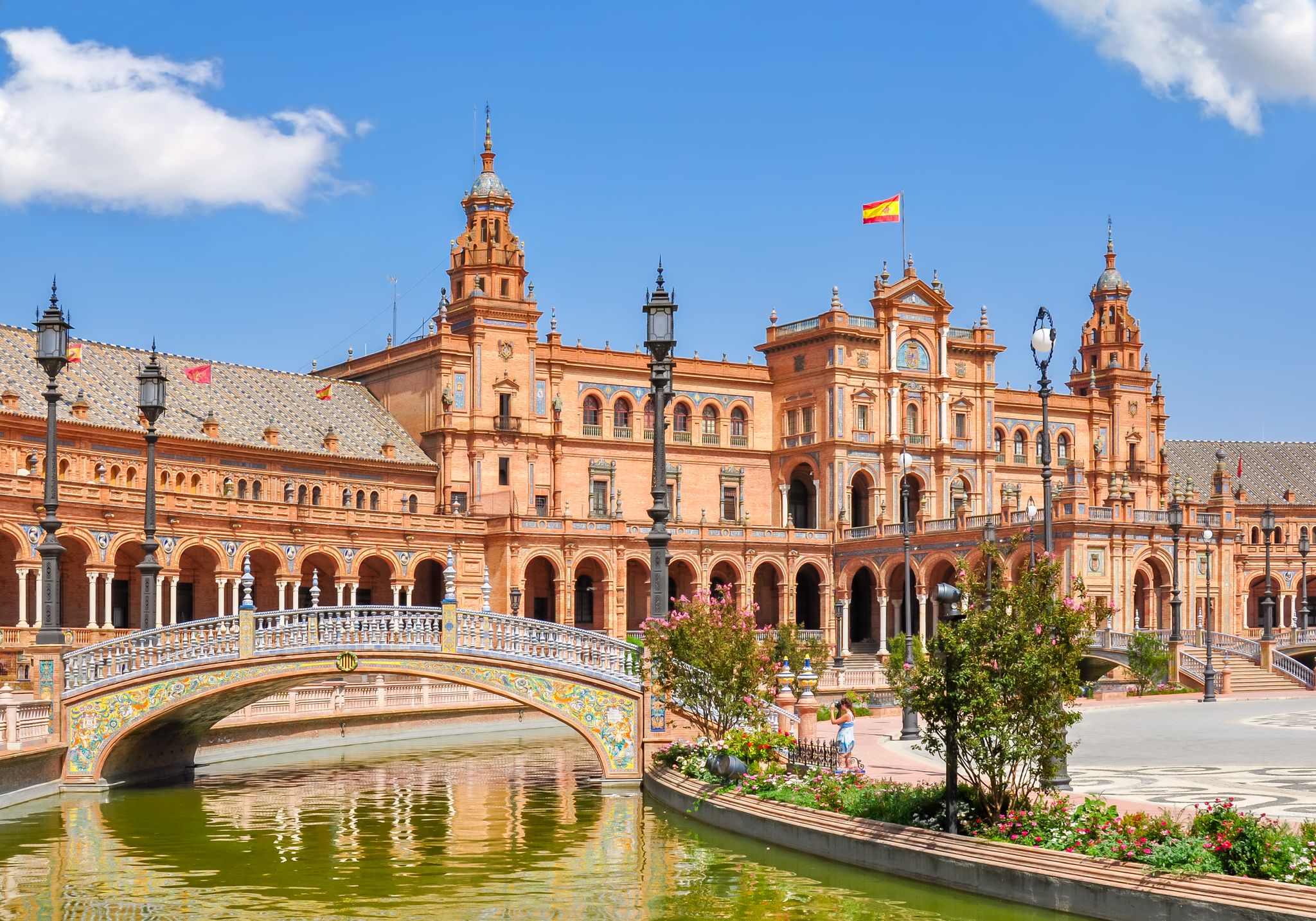
Aim for the shoulder seasons to explore Spain’s best city break packages in Barcelona, Madrid, and Seville without the summer heat or winter cold. From April to June and September to November, enjoy pleasant weather for walking tours and terrace dining. This time also avoids peak tourist crowds, offering a more authentic experience of city life.
Best Time for Road Trips
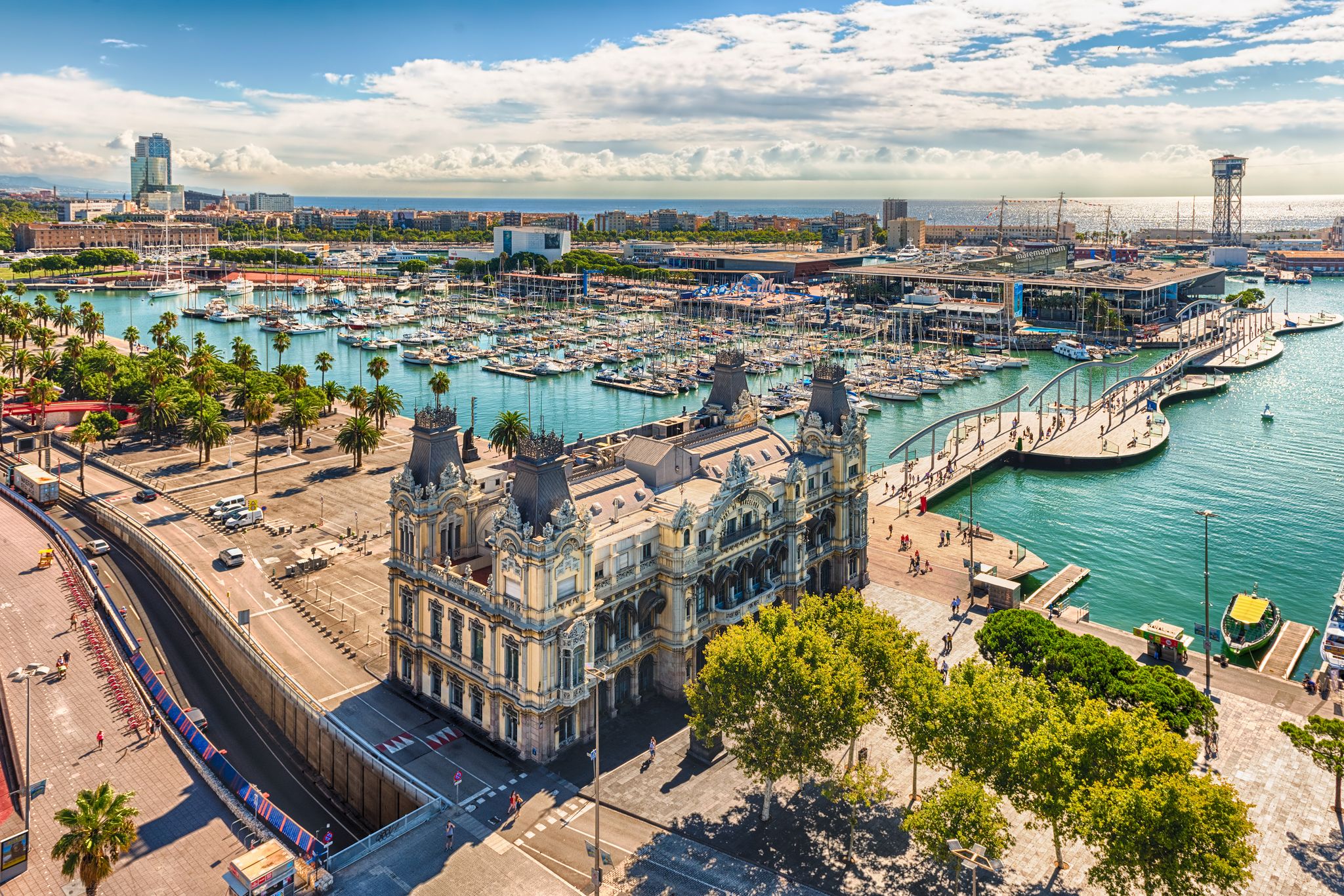
From April to June and September to October, the weather is perfect for road trip packages across Spain. Picture cruising through the stunning Picos de Europa mountains, exploring La Rioja's vineyards, or driving along the beautiful Costa Brava region. With fewer crowds, these months ensure a smoother and more enjoyable journey.
Best Time for Ski Trips

For those who love winter sports, Spain’s prime ski season spans from December to March. This is when the majestic Pyrenees and the soaring Sierra Nevada mountains are draped in thick snow, creating a winter wonderland. This setting is ideal for skiing, snowboarding, and activities like hiking or snowshoeing in Sierra Nevada Park.
Hit the slopes during the sweet spots of early January, once the holiday rush calms down, or in February, right before spring warmth starts to melt the snow. Here's a pro tip: aim for weekdays to dodge local weekend warriors, giving you wide-open runs and shorter lift lines to experience the best ski trip packages in Spain.
Frequently Asked Questions (FAQs)
When is the best time to visit Spain for good weather?
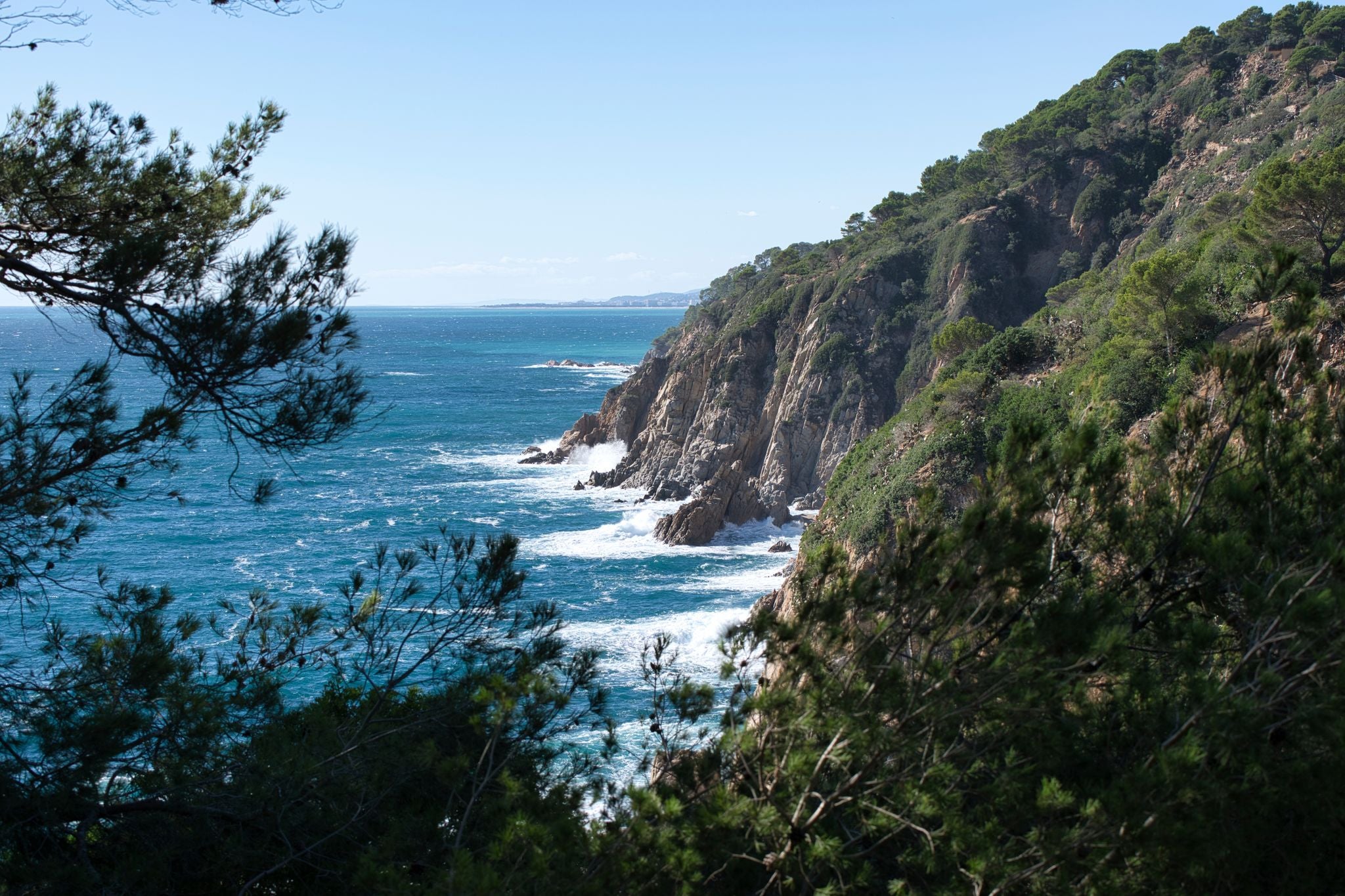
The best time to visit Spain for mild weather and minimal rainfall is from late spring to early fall. This period includes May, June, September, and October. Enjoy comfortable temperatures perfect for a walking tour through Seville’s enchanting streets or relaxing on Barcelona’s beaches.
In the south, especially Andalusia, warm and sunny days extend well into October. This makes it a great choice for those seeking to prolong their summer. Plan your journey to Spain now to experience its beautiful regions in the best possible weather!
When is the best time to visit Spain to avoid crowds?

The best time to visit Spain to avoid the hustle and bustle of peak tourist seasons is during March, April, and November. These months are quieter, offering fewer tourists and a more relaxed atmosphere. This allows for deeper engagement with local culture and enjoyment of attractions without long waits.
Additionally, early December is a great time to visit before the holiday rush begins. This period offers a quiet yet festive experience, making it ideal for enjoying the pre-Christmas ambiance.
When is the best time to visit Spain for a cheap vacation?
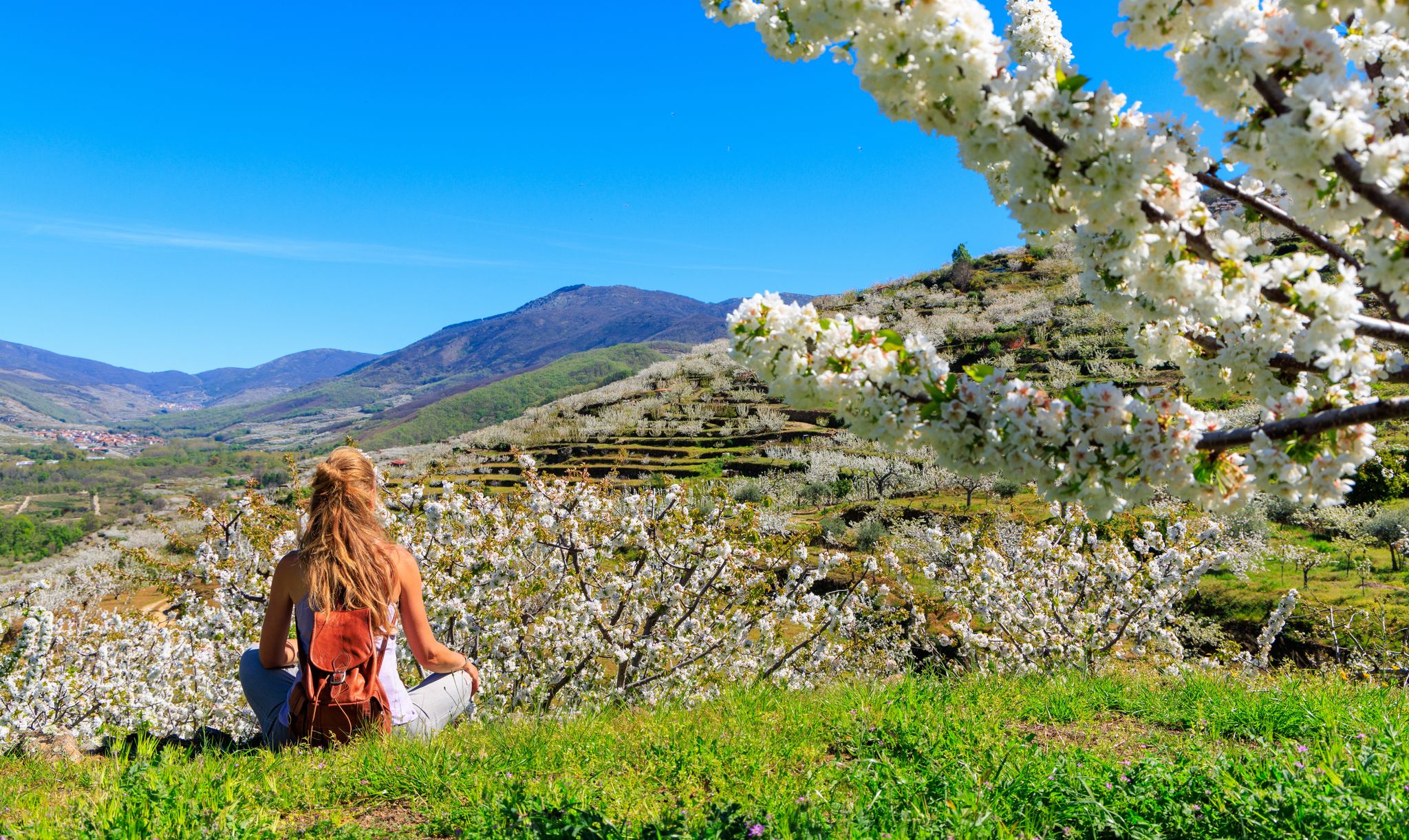
The best time to visit Spain for a budget-friendly vacation is during the shoulder seasons: spring (March to May) and fall (September to October). These months often come with lower prices on accommodations and flights, along with fewer crowds at popular attractions.
Off-peak winter months (November to February), except during the holidays, can also offer great deals. However, the weather is cooler, and some attractions may operate on reduced hours.
Is there a time that’s not ideal to visit Spain?

There isn't an unfavorable time to visit Spain, as each season has its own unique offerings. In spring, explore blooming gardens, take part in local fairs, and enjoy outdoor activities like hiking in regions such as Andalusia. In summer, enjoy vibrant outdoor festivals, lively beach parties, and bustling nightlife in cities like Barcelona and Valencia.
Fall is perfect for wine lovers, as many regions host grape harvest festivals, and you can explore beautiful autumn landscapes in places like the Picos de Europa. Winter offers opportunities for skiing in the Sierra Nevada or enjoying the festive holiday markets in cities like Madrid and Barcelona.
Spain: A Year-Round Destination
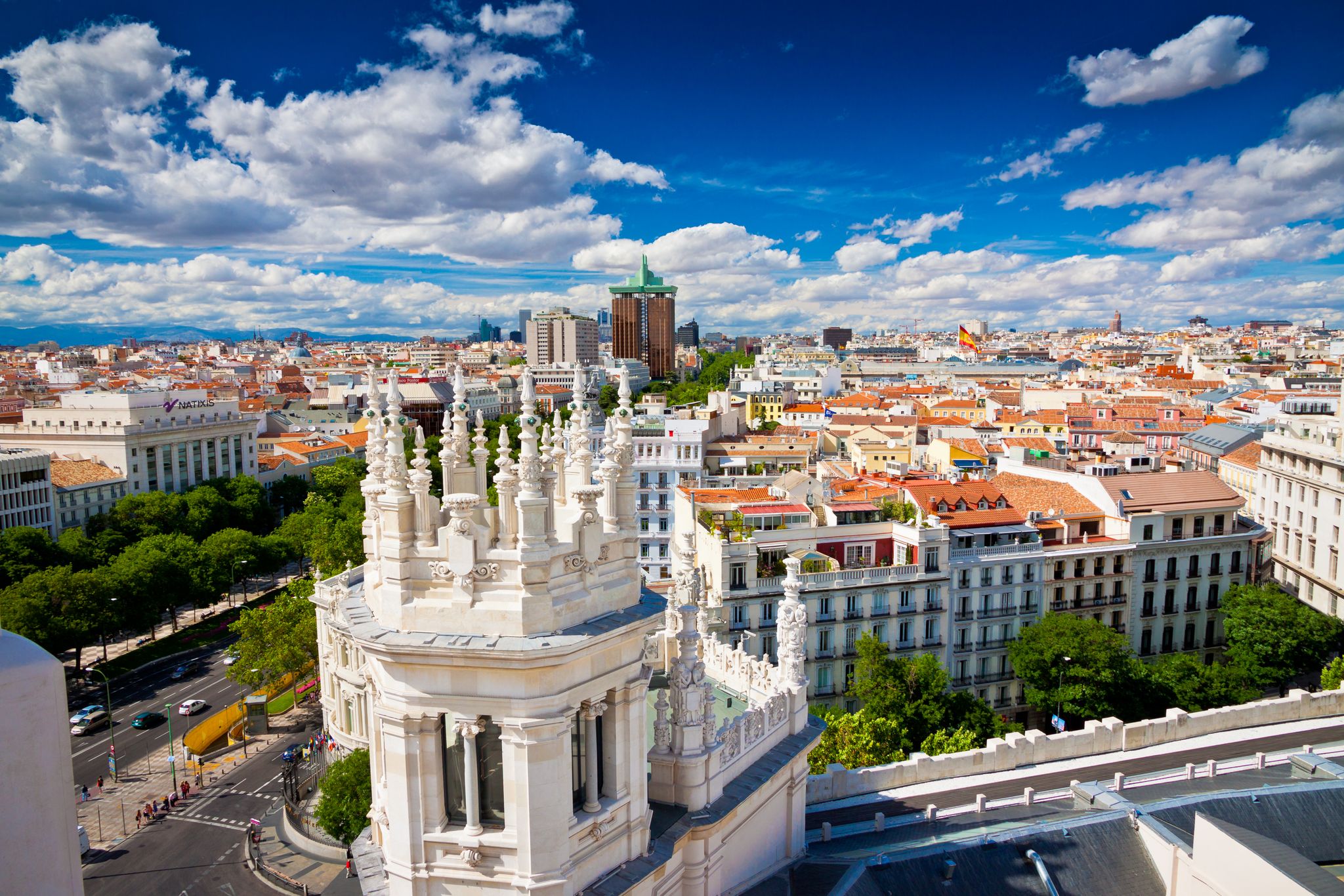
Spain truly shines as a year-round destination. No matter when you visit, the country has something special waiting for you. Travel in September and enjoy its mild weather, perfect for sightseeing and outdoor adventures.
If you're considering Spain in May, you'll be welcomed by pleasant temperatures and blooming landscapes, ideal for exploring the countryside and lively cities. Winter brings snowy adventures, while summer offers sun-drenched beaches. Ultimately, the best time to visit Spain depends on your personal interests and desired experiences.
Choosing the right time to visit is key to a memorable vacation. By aligning your trip with your preferences, you can fully immerse yourself in Spain’s diverse regions and seasonal highlights. With favorable weather and captivating activities available throughout the year, Spain invites you to explore its rich heritage and stunning scenery at any time.
So, pack your bags and start planning your long-awaited vacation in Spain. It’s time you immerse yourself in the country’s vibrant culture and breathtaking beauty. Embrace the adventure and let Spain’s charm create moments you will treasure forever.
